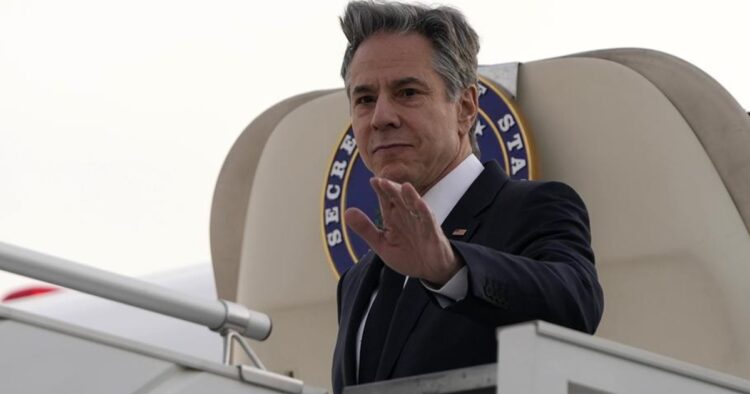The ongoing conflict in the Middle East has taken another turn as U.S. Secretary of State Antony Blinken meets with Saudi Arabia’s Crown Prince Mohammed bin Salman in Riyadh. This marks Blinken’s fifth visit to the region since the outbreak of the war in Gaza. The primary aim is to push for a potential cease-fire deal and postwar planning while also addressing regional tensions.
However, significant challenges loom on all fronts. Hamas and Israel are in public disagreement over crucial aspects of a potential truce. Israel has rejected U.S. calls for a path to a Palestinian state, while Iran’s militant allies in the region appear undeterred by U.S. strikes.
In Gaza, Hamas is reemerging in heavily devastated areas following Israeli withdrawal, indicating that Israel’s objective of crushing the group remains unfulfilled. Videos depict extensive destruction, with nearly every building damaged or destroyed.
Israeli Defense Minister Yoav Gallant has affirmed continued military operations in northern Gaza for months, with a focus on the ongoing offensive in the south. The aim is to establish control over the entire territory, including the town of Rafah near the Egyptian border, despite concerns from Egypt about potential threats to their peace treaty.
During the meeting between Blinken and Crown Prince Mohammed bin Salman, discussions emphasized the importance of addressing humanitarian needs in Gaza and fostering regional integration and prosperity. However, a comprehensive agreement seems distant amidst ongoing conflict and escalating casualties.
In the latest developments, 113 bodies were brought to Gaza hospitals within 24 hours, bringing the total Palestinian death toll from the war to 27,478. The conflict has displaced 85% of Gaza’s population and pushed a quarter of residents to starvation.
Hamas appears to be regaining control in certain areas of Gaza, with reports of masked gunmen and security forces reappearing. Israeli military operations continue to prevent Hamas from rebuilding its capabilities.
Israeli Prime Minister Benjamin Netanyahu remains committed to continuing the war until Hamas’ military and governing abilities are crushed, and remaining hostages are released. Cease-fire talks led by the United States, Qatar, and Egypt have advanced, but significant gaps remain, particularly regarding the release of hostages.
The conflict has heightened tensions across the region, with increased strikes and counterstrikes. Israel and Hezbollah exchange fire along the Lebanon-Israel border, while recent drone attacks attributed to Iran-backed militants resulted in casualties near the Jordan-Syria border. The United States and Britain have conducted strikes against Iran-backed Houthi rebels in Yemen in response to attacks on international shipping in the Red Sea, further complicating the regional landscape.

















Comments